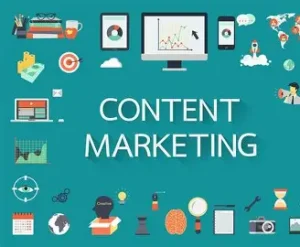
SEO and Content Marketing: The Preface Digital Duo
In today’s digital-first world, visibility is everything. Whether you’re running a business, building a personal brand, or managing an online publication, being discovered online by the right audience can make or break your efforts. This is where Search Engine Optimization (SEO) and Content Marketing come into play. Though often discussed separately, these two strategies are most powerful when used together.
In this blog, we’ll explore the relationship between SEO and content marketing, how they support each other, and what businesses and marketers need to do to make them work effectively.
What is SEO?
Search Engine Optimization (SEO) is the practice of optimizing your website and its content to rank higher in search engine results pages (SERPs), primarily on Google. The higher your page ranks, the more likely users are to click and visit your site.
SEO encompasses various techniques, including:
- On-page SEO: Optimizing content, HTML tags, and internal links.
- Off-page SEO: Building backlinks and increasing domain authority.
- Technical SEO: Ensuring your site is fast, mobile-friendly, and easy for search engines to crawl.
But SEO isn’t just about pleasing algorithms—it’s about making your website useful and accessible to real users.
What is Content Marketing?

Content marketing is a strategic marketing approach focused on creating and distributing valuable, relevant, and consistent content to attract and engage a defined audience—with the ultimate goal of driving profitable customer action.
Examples of content marketing include:
- Blog posts and articles
- eBooks and whitepapers
- Videos and podcasts
- Infographics
- Email newsletters
Unlike traditional advertising, content marketing isn’t about directly selling. Instead, it’s about building trust and providing value over time.
SEO and Content Marketing: Different but Interconnected
While SEO and content marketing are distinct disciplines, they’re deeply interconnected:
- SEO needs content: You can’t optimize what doesn’t exist. Keywords, meta descriptions, and search rankings depend on well-written, relevant content.
- Content needs SEO: Great content that no one sees is wasted effort. SEO ensures your content is discoverable by the right audience.
Think of SEO as the technical roadmap and content marketing as the fuel. When aligned, they drive consistent, qualified traffic to your site and keep users engaged.
How SEO Supports Content Marketing

1. Keyword Research Shapes Content Strategy
Keyword research is foundational to both SEO and content marketing. It helps you identify:
- What your target audience is searching for
- The language they use
- The topics that matter to them
For instance, if you discover that “best CRM software for small business” is a frequently searched keyword with low competition, you can craft a blog post or guide around that phrase. This ensures that your content is both relevant to your audience and positioned to rank well.
2. SEO Provides Structure
SEO best practices help structure content in a way that search engines and users appreciate. This includes:
- Using H1, H2, H3 headings to organize information
- Optimizing meta titles and descriptions
- Adding internal links to related articles
- Compressing images and ensuring fast loading times
These structural elements make content easier to navigate, improve user experience, and signal relevance to search engines.
3. Link Building Increases Content Authority
Content marketing provides the assets—high-quality blog posts, infographics, and research—that others want to link to. These backlinks:
- Boost domain authority
- Improve rankings
- Drive referral traffic
A solid SEO strategy focuses on creating link-worthy content, while outreach and relationship-building help get those valuable backlinks.
How Content Marketing Supports SEO
1. Drives Organic Traffic
Consistent content creation helps websites rank for a broader range of keywords. Each blog post or article is a new opportunity to appear in search results. Over time, this cumulative effect can lead to exponential growth in organic traffic.
According to HubSpot, companies that blog regularly generate 67% more leads than those that don’t. That’s because content brings people to your site through non-branded search terms and top-of-funnel queries.
2. Enhances User Engagement
Search engines reward websites that provide value to users. Metrics like:
- Time on page
- Bounce rate
- Click-through rate
…all signal quality to Google. Well-written, informative content keeps users engaged and encourages them to explore your site further.
3. Supports E-A-T Principles
Google’s algorithm favors content that demonstrates Expertise, Authoritativeness, and Trustworthiness (E-A-T). High-quality content written by experts, backed by data, and hosted on reputable websites performs better in search rankings.
Content marketing is the perfect vehicle for showcasing E-A-T. Case studies, how-to guides, thought leadership, and testimonials all contribute to your perceived authority.
Best Practices for Aligning SEO and Content Marketing
To make the most of SEO and content marketing, you need a unified strategy. Here are some best practices:
1. Create a Content Calendar with SEO in Mind
Plan your blog posts, videos, and other content around keyword research and search trends. Include target keywords, topics, publishing dates, and goals in your calendar.
2. Optimize Every Piece of Content
Make optimization part of your content creation process:
- Add keywords naturally (don’t stuff!)
- Use keyword-rich headings and subheadings
- Write compelling meta titles and descriptions
- Add internal and external links
- Include alt text for images
3. Repurpose and Refresh Content
Content doesn’t have to be one-and-done. Update old blog posts with new stats, rewrite outdated sections, and improve formatting. You can also repurpose content into different formats—turn a blog post into a video or infographic to reach new audiences.
4. Track and Measure Results
Use tools like Google Analytics, Google Search Console, Ahrefs, or SEMrush to monitor:
- Organic traffic
- Keyword rankings
- Click-through rates
- Engagement metrics
Data helps you identify what’s working and where to improve.
5. Focus on User Intent
Google has become very good at understanding user intent. Your content should match the intent behind the keywords—whether that’s informational, navigational, transactional, or commercial.
If someone searches “how to start a podcast,” they want a step-by-step guide, not a sales pitch.
Common Mistakes to Avoid
- Writing for search engines, not humans: Keyword stuffing hurts readability and user experience.
- Neglecting technical SEO: Great content won’t rank if your site is slow, not mobile-friendly, or poorly structured.
- Creating content without a goal: Every piece of content should have a purpose—traffic, leads, brand awareness, etc.
- Ignoring promotion: Don’t just publish and pray. Promote your content through email, social media, and partnerships.
Final Thoughts: Stronger Together
SEO and content marketing aren’t opposing strategies—they’re two sides of the same coin. Content gives  its substance, while SEO gives content its visibility. When these two disciplines work hand-in-hand, they form a powerhouse strategy that drives traffic, builds trust, and ultimately grows your business.
its substance, while SEO gives content its visibility. When these two disciplines work hand-in-hand, they form a powerhouse strategy that drives traffic, builds trust, and ultimately grows your business.
In the ever-evolving digital landscape, one thing remains clear: content is still king—but only when it’s found, read, and appreciated. That’s where SEO earns its crown.
If you’re serious about building a long-term online presence, don’t choose between SEO and content marketing. Choose both—and make them work together.